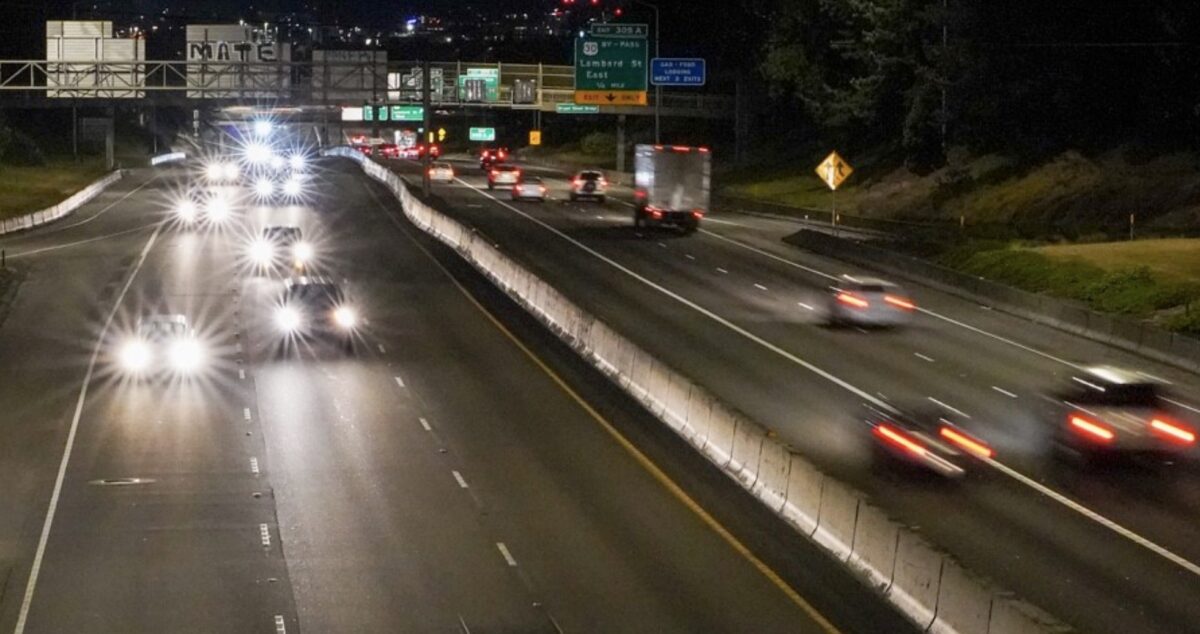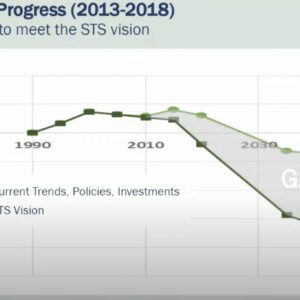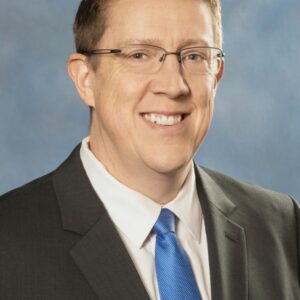
(Photo: Jonathan Maus/BikePortland)
The Oregon Department of Transportation faces a conundrum when it comes to making changes to their freeways.
“While the road building era of the 1950s freeway networks is essentially complete, even minor investment intended to optimize existing roadway system assets are increasingly facing opposition in the name of ‘induced demand’.”
— excerpt from ODOT’s research idea
If they do nothing (policy or infrastructure-wise), not only will ODOT draw the ire of some politicians and factions of the public, but the assumption is that specific locations will continue to have major bottlenecks during peak traffic times and/or when crashes happen. But if they add lanes or make other changes to smooth out those bottlenecks, they risk attracting too many drivers, which will cause the state’s greenhouse gas emissions to go up. Expanding and upgrading freeways is also a surefire way to attract opposition, lawsuits, delays, and/or — ODOT’s worst fear — cold feet from elected officials.
To help untangle this knot, ODOT is seeking help from outside experts. Our eagle-eyed ODOT-watcher Peter Welte came across a research project pitched by the agency’s Climate Office that would give them, “Guidance on how Induced Demand affects Climate Change Emission Goals.” The research request was posted to the Transportation and Environmental Research Ideas database (hosted by the nonprofit American Association of State Highway and Transportation Officials, or AASHTO) in July 2021 by ODOT Climate Impact Analysis Program Manager Tara Weidner. It comes with an estimate payout of $100,000 – $249,000 for the right consultant
Here are a few salient excerpts from the research idea scope:
“… recurring bottlenecks and nonrecurring events like crashes and severe weather events, result in breakdowns on freeway conditions reducing the mobility and reliability of the freeway system. These conditions push vehicles in to non-optimal speeds… while slower speeds and stop-and-go conditions increase pollutants and GHG emissions. While the road building era of the 1950s freeway networks is essentially complete, even minor strategies and investment intended to optimize existing roadway system assets are increasingly facing opposition in the name of “induced demand”…”
… DOTs need assistance in understanding the best investments to balance competing goals… while “induced” demand has been typically applied to large roadway projects, there are new concerns that auxiliary lanes (typically less than 1 mile of “new capacity”) may also induce traffic demand, limiting their efficiency in solving congestion bottlenecks.
Advertisement
… Under what conditions do major and minor induced demand issues occur, and how can these effects be mitigated through tolling or land use controls. How can roadways be a responsible component of a transportation system intent on tackling GHG emissions that encourage spreading demand across multi-modal options, where available. A definitive study of these and other minor “capacity” enhancements on both freeways and arterials is needed to improve DOT investment decisions for the long term.
… This proposed study would be the first step to provide a broader understanding of the efficient roadway congestion strategies.”
Reading through the research idea scope, an optimist could make the case that ODOT is doing the right thing by learning more about how things like how/if “auxiliary” lanes on freeways create more traffic and what impact that traffic has on our communities and planet. But a skeptic might see this exercise as nothing more than a way for ODOT to bulk up talking points in order to effectively beat back growing outcry over freeway widening projects (after all they specifically mention opposition twice). Another thing that crossed my mind is how ODOT might simply be looking for ways to more effectively spin freeway expansions as they begin writing grant applications to their “new best friend”, U.S. DOT Secretary Pete Buttigieg.
Another thing to keep in mind when trying to understand ODOT’s perspective on freeway projects. The agency is led by someone who believes that tweaking interstates to create free-flowing traffic is a good climate change strategy. At his Oregon Senate confirmation hearing in late 2019, ODOT Director Kris Strickler said, “… We know that, cars sitting in traffic, emitting the emissions is not necessarily the best way to manage greenhouse gas reductions.”
Stay tuned. If ODOT finds anyone to do this research, we’ll try to track it down and share it here.
For now, brush up on induced demand by reading this piece by Joe Cortright in City Observatory (who I should point out is an outspoken critic of ODOT and co-founder of No More Freeways).






Thanks for reading.
BikePortland has served this community with independent community journalism since 2005. We rely on subscriptions from readers like you to survive. Your financial support is vital in keeping this valuable resource alive and well.
Please subscribe today to strengthen and expand our work.